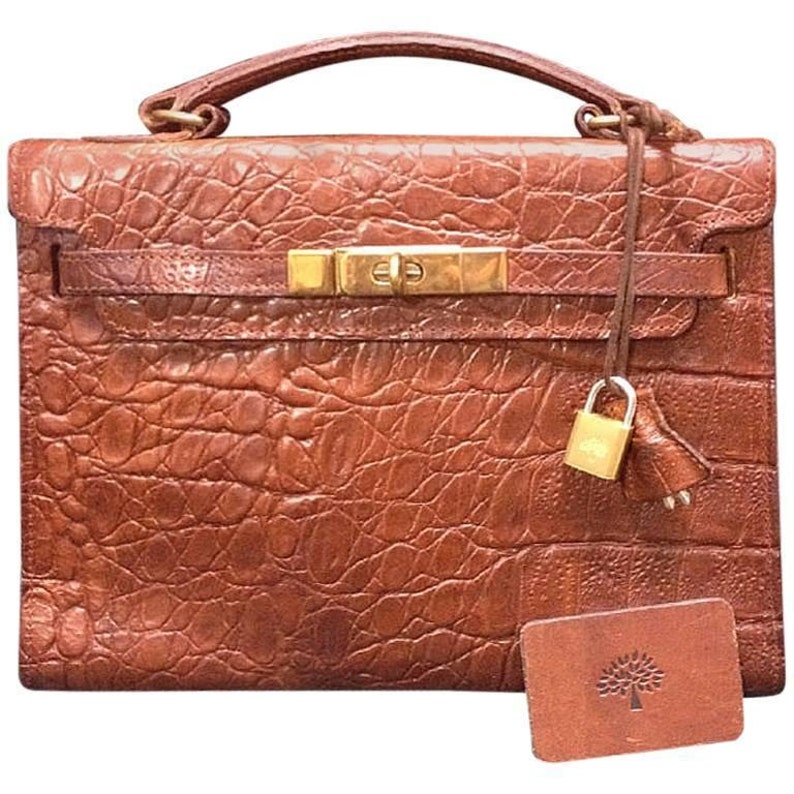The fashion industry has always been a platform for expressing individuality and establishing trends. Over the years, a certain accessory has managed to preserve its position as a symbol of luxury and elegance - crocodile purses. These stylish accessories have captured the hearts (and wallets) of fashionistas around the world. While some see them as the ultimate status symbol, others express concern over the ethical and environmental impact of these extravagant accessories.

Crocodile purses, also known as croc bags, are made from the hides of crocodiles, specifically the Nile crocodile (Crocodylus niloticus) and the American alligator (Alligator mississippiensis). These exotic materials are painstakingly crafted into high-end purses, often considered a long-term investment due to their durability and timeless appeal.
The allure and exclusivity of crocodile purses have made them a staple among famous personalities and wealthy individuals. Celebrities frequently flaunt their prized croc bag s on red carpets and social media, igniting a desire among their fans to own a piece of the elite lifestyle. Fashion houses like Hermès and Louis Vuitton have embraced these luxurious accessories, escalating their popularity and raising their value to eye-watering figures.
However, the production and sourcing of crocodile hides raise ethical and environmental concerns. The harvesting process typically involves raising crocodiles in captivity, where they are specifically bred for their skins. The conditions vary across the globe, with some farms prioritizing animal welfare and employing sustainable practices, while others opt for mass production at the expense of crocodilian well-being.
Animal rights activists argue that keeping crocodiles in captivity is a highly controversial matter. These reptiles are known for their ancient lineage and impressive adaptations, making them an essential part of the ecosystem. Advocates argue that removing them from their natural habitats disrupts the delicate balance of nature and poses a threat to the species' survival.
Furthermore, the crocodile industry imposes risks on local communities and the environment. In regions where crocodile farming is prevalent, such as Australia and Southeast Asia, criticisms have arisen regarding pollution caused by waste byproducts, including chemicals used in tanning processes. Additionally, land used for farming crocodiles could potentially be repurposed to promote sustainable agricultural practices or conservation efforts.
Efforts to address these concerns have encouraged some fashion brands to become more transparent about their sourcing and production methods. While the implementation of ethical frameworks is a step in the right direction, conservationists argue that more stringent regulations are required to ensure the long-term viability of crocodile populations and their habitats.
Alternatives to genuine crocodile leather have emerged in response to the ethical and environmental concerns. Fashion houses and designers have turned towards sustainable materials such as vegan leather, which can closely resemble the texture and appearance of crocodile hide. This shift towards eco-friendly alternatives has gained traction among consumers seeking fashionable accessories without compromising on their beliefs.
In conclusion, crocodile purses remain a contentious topic within the fashion industry. While they continue to captivate fashion enthusiasts and elevate the status of those who possess them, the ethical and environmental implications cannot be ignored. Striking a balance between luxury and sustainability is vital for the industry's progress. As consumer consciousness grows, it is hoped that fashion houses and trendsetters will move towards more responsible practices and provide a platform for alternative materials that do not harm the planet or its inhabitants. Only then can luxury and guilt-free fashion coexist harmoniously in the world of crocodile purses.

Title: Crocodile Handbags: A Status Symbol with a Controversial Past
